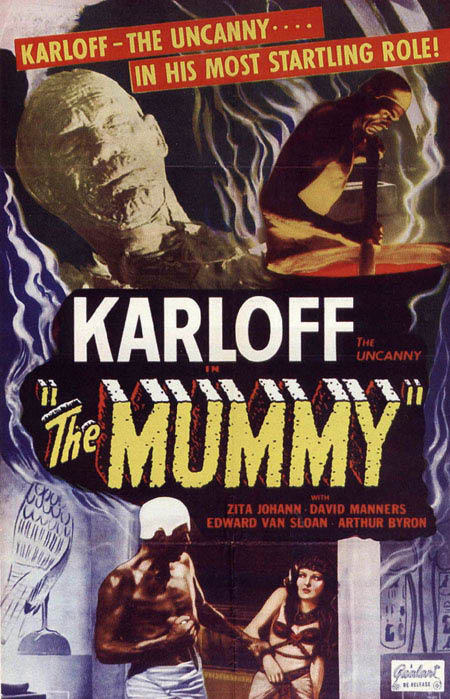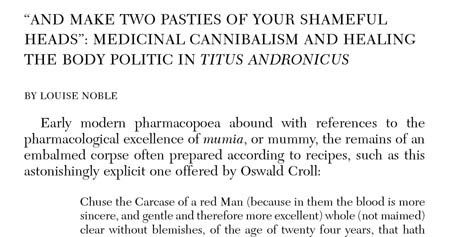
The medicinal uses of powdered mummy
by A.S. Kaswell, Improbable Research staff
Nowadays, powdered mummy may not be everyone’s cup of tea, but for many years it was just what the doctor ordered. That’s one of the takeaway messages of Richard Sugg’s study “’Good Physic but Bad Food’: Early Modern Attitudes to Medicinal Cannibalism and its Suppliers.”
Dr. Sugg is a Research Fellow in Literature and Medicine at Durham University. He begins his monograph with an astute observation: “The subject of medicinal cannibalism in mainstream western medicine has received surprisingly little historical attention.”
Sugg tells us that mummy, generally in powdered form, “having originally been a natural mixture of pitch and asphalt, came in the twelfth century to be associated with preserved Egyptian corpses.” It then “emerged as a mainstream western medicine” and remained a standard-issue drug until “opinion began to turn against it in the eighteenth century.”
Physicians pre-scribed powdered mummy for diverse ailments. An English pharmacopeia published in 1721 specifies two ounces of mummy as the proper amount to make a “plaster against ruptures.” Ambroise Paré, royal surgeon to sixteenth century French kings, proclaimed mummy to be “the very first and last medicine of almost all our practitioners” against bruising.
Dr. Paré harbored doubts about the drug’s efficacy, lamenting that “wee are ... compelled both foolishly and cruelly to devoure the mangled and putride particles of the carcasses of the basest people of Egypt, or such as are hanged.” But Dr. Paré was an unusually driven doubting Thomas — he lamented having “tried mummy ‘an hundred times’ without success.”
The Sugg study explains that “mummy was an important commodity. It is often seen in long lists of merchants’ wares and prices.” The marketplace attracted counterfeiters. Sugg supplies an anecdote: “Tellingly, when Samuel Pepys saw a mummy it was in a merchant’s warehouse; while ‘the abuses of mummy dealers in selling inferior wares’ were especially widespread and notorious by the end of the seventeenth century.”
The best suppliers maintained high standards. The presumably admirable recipe used by 17th century German pharmacologist Johann Schroeder included: “the cadaver of a reddish man (because in such a man the blood is believed lighter and so the flesh is better), whole, fresh without blemish, of around twenty-four years of age, dead of a violent death (not of illness), exposed to the moon’s rays for one day and night, but with a clear sky. Cut the muscular flesh of this man and sprinkle it with powder of myrrh and at least a little bit of aloe, then soak it.” And so forth.
This study removes some, if not all, of the horror from the Stephen Sondheim musical “Sweeney Todd,” in which a London barber of yesteryear murders his customers and recycles them as stuffing for yummy meat pies. Thanks to Dr. Sugg’s research, the play’s main love song gains a soupçon of innocence, especially in its cheerful refrain: “The history of the world, my sweet, is who gets eaten and who gets to eat.”
Mummy Powder and Shakespeare
Louise Noble of the University of New England looked at how Shakespeare looked at mummy medicine. Her 2003 study “‘And Make Two Pasties of Your Shameful Heads’: Medicinal Cannibalism and Healing the Body Politic in Titus Andronicus” presents copious details and analysis.

Noble’s 2003 study about Shakespeare’s take on mummy powder.
Noble
introduces her subject by reprinting this “astonishingly explicit”
recipe from Oswald Croll’s 1609 book Bazilica Chymica and Praxis
Chymiatricae or Royal and Practical Chymistry (translated by John
Hartman in 1670), which no doubt inspired Dr. Schroeder:
Chuse
the Carcase of a red Man (because in them the blood is more sincere,
and gentle and therefore more excellent) whole (not maimed) clear
without blemishes, of the age of twenty four years, that hath been
Hanged, Broke upon a Wheel, or Thrust-through, having been for one day
and night exposed to the open Air, in a serene time. This Mumy (that
is, Musculous flesh, of the Thighs, Breasts, Armes, and other parts)
from the two Luminaries, once illuminate and constellate, cut into
small pieces or slices and sprinkle on them Powder of Myrrh, and of
Aloes, but a very little (otherwise it will be too bitter) afterward by
Macerating, Imbibe them for certain days in Spirit of Wine, hang them
up a little, and again imbibe them, then hang them up to dry in the
Air, this so dryed will be like Flesh hardned in Smoak, and be without
stink.At the end of her study—which after all centers on the play Titus Andronicus—Noble concludes that
The elaborate rhetorical juggling of medicine and cannibalism in the play is an inevitable consequence of a cultural behavior, wherein the socially accepted medical consumption of human bodies and the foreign, abjected, and forbidden act of eating human flesh are profoundly implicated in one another.

No comments:
Post a Comment